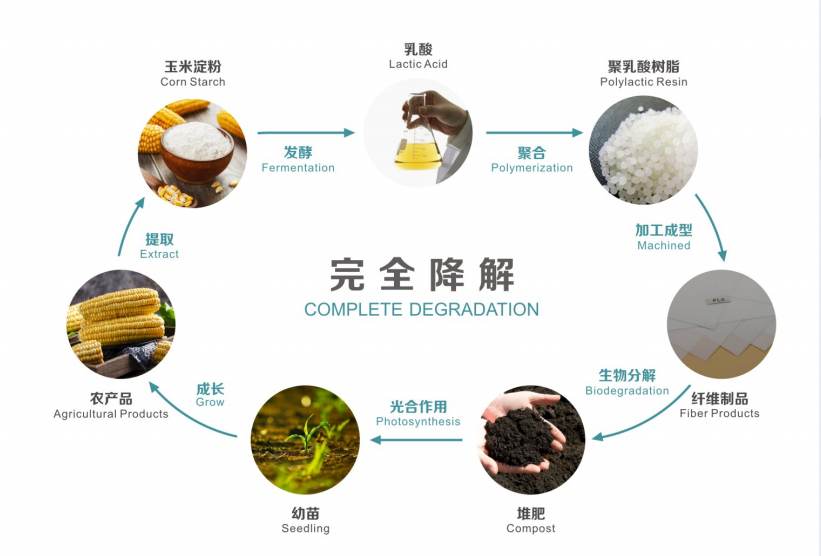Polylactic acid (PLA) is a novel bio-based and renewable biodegradable material, which is made from starch materials proposed by renewable plant resources (such as maize and cassava). Starch raw materials were saccharized to get glucose, and then high purity lactic acid was made by fermentation of glucose and certain strains, and then POLylactic acid with a certain molecular weight was synthesized by chemical synthesis. It has good biodegradability. After use, it can be completely degraded by microorganisms in nature under specific conditions, and eventually generate carbon dioxide and water. It does not pollute the environment, which is very beneficial to the protection of the environment and is recognized as environmentally friendly material. China PP Nonwoven Fabric Price
PLA, also similar to one kind of PET spunbond, has excellent drapability, smoothness, moisture absorption and air permeability, natural bacteriostasis and skin reassuring weak acid, good heat resistance and UV resistance.
PLA all written as :polylactic acid
Polylactic acid, also known as polylactide, belongs to the polyester family. Polylactic acid (PLA) is a polymer obtained by polymerization of lactic acid as the main raw material. The raw material source is sufficient and can be recycled. It mainly uses corn and cassava as raw materials. The production process of PLA is pollution-free, and the product can be biodegraded to realize the cycle in nature, so it is an ideal green polymer material.
Polylactic acid has good thermal stability, processing temperature 170~230℃, good solvent resistance, can be processed in a variety of ways, such as extrusion, spinning, biaxial stretching, injection blow molding. Products made of polylactic acid are not only biodegradable, but also have good biocompatibility, gloss, transparency, feel and heat resistance. They also have certain bacterial resistance, flame retardant and UV resistance, so they are widely used as packaging materials, fibers and nonwovens, etc. At present, it is mainly used in clothing (underwear, outerwear), industry (construction, agriculture, forestry, paper making) and medical and health fields.
Post time: Aug-24-2022

